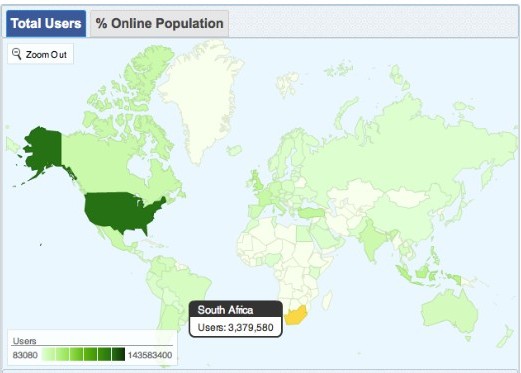The South African shoemaker selling sandals in an open air market in SWATO is in competition with other shoemakers locally or even manufacturers globally, but what make his business unique is that his handcrafted product is made from rubber tires at the local garbage dump. The tires are free, and his business concept is easy to template from shoemaker to shoemaker without legal restrictions or permissions to prevent duplication of product. Such open transfer of intellectual information and process can be compared to the openness and power of social networks, and the way in which conversations can freely stimulate the flow of ideas such as crowdsourcing (free outsourcing), thus empowering people, particularly those in economically challenged emerging communities around the world. For more on this kind of innovation read Steven Johnson’s Where Good Ideas Come From.
So what does the emerging nation and online social platform have to do with the “right” practice of digital strategy? The rapid increase and use of social networking platforms, mobile platforms, and available online access are challenging traditional digital strategy concepts, replacing them with new global ones. These new strategies require a broader understanding of global cultural and behavioral norms.
For example, a World Bank report recently stated that the number of mobile subscriptions in the world is expected to pass five billion this year, according to the International Telecommunication Union. That would mean more people today have access to a cell phone than have access to a clean toilet, says the United Nations. This increase is being fueled by mobile technology growth in developing countries like Kenya, India, Brazil, South Korea, and even Afghanistan.
Your digital campaign strategy may be missing its full market potential if you do not consider the growing influence that many emerging global communities have over brand adoption. Without considering these influences, a community’s global feedback loop can disrupt your campaign strategy. For example, in the US, a large percentage of the Latino and Indian population have strong ties to their country of origin.
Regarding social network strategy, South Africa, for example, has approximately 3.38 million Facebook users, or 64 percent of its online population. This translates into a much higher number of people with an Internet connection using Facebook, than countries such as Germany, where only 23.07 percent have a profile on Facebook. So while many strategists are integrating communities in Europe into their strategy mix, they may be overlooking emerging markets such as South Africa.
Around the world, including countries with a variety of different economic conditions, people using the Internet are increasingly logging on to social networks, and younger users are leading this trend.
Earlier this year, Pew Research concluded that, “while involvement in social networking is relatively low in many less economically developed nations, this is largely due to the fact that many people in those countries do not go online at all, rather than having a disinterest in social networking in particular.”
As Internet and mobile availability increases over the next five years, countries such as South Africa, India, and China will embrace social networking and mobile technologies for personal and quality of life improvements rather than recreational use; the influence this audience will have in driving brand strategy will be powerful.
According to a recent poll, approximately 53 percent of Americans say they do not believe that the spread of affordable broadband should be a major government priority. Would this percentage change if this poll were taken in India, with its population of approximately 1.15 billion, and where 80% of its population is living on less than $2 a day? I think it would.
With the potential for huge financial gains by the private technology sector, and political pressure placed on government officials by voters, changes in government-supported and privately funded Internet access will happen. Increased access to online social communities will also translate into consumers having even more control and influence over brands.
So where does this leave the practice of digital strategy today, and going forward? It will require you, the strategist, to build campaign strategy with a keen understanding of consumer and cultural behavior in local niche and global online communities. This process will replace some current strategies that treat consumers as if they are one homogeneous group or market.
Social networks such as Facebook make this process easier because of their unique advertising platform which allows for hypertargeting. Analytics tools produce valuable data about country- and city-specific user activity, providing intelligence for audience development strategies. PR campaigns can ramp up their page view numbers more rapidly by targeting bloggers globally, which also increases viral opportunities and early brand adoption. International SEO (search engine optimization) techniques can also be honed for international strategy effectiveness, along with social media sites.
For example, in Korea, 77.7 percent of the population is online and searching, with Naver (the fifth most used search engine in the world), not Google, as its leading search tool, commanding approximately 77 percent of all search traffic.
Finally, you can increase the viral possibilities of your content by including global affiliate and blogger strategies as part of your plan.
Because digital strategy is rapidly evolving into a specialization that encompasses various disciplines, including digital strategy, cultural anthropology, intelligence, business analytics, data specialization, brand planning, etc., you must stay “on trend” and relevant. Understanding the differences and similarities in cultures domestically and globally will greatly affect your brand campaigns’ success.
By: Peter Sabbagh

